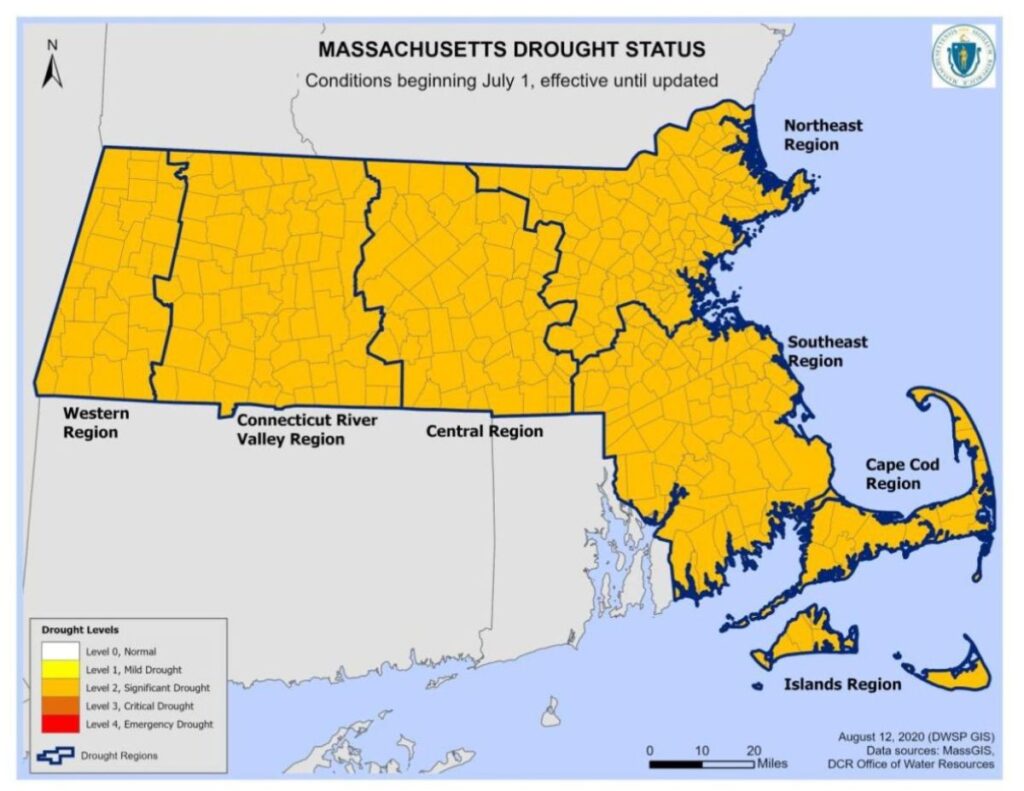Due to above normal temperatures throughout July and early August and more than three months of below normal rainfall, a Level 2 – Significant Drought has been declared in all seven regions of the Commonwealth – the Western, Connecticut River Valley, Central, Northeast, Southeast, Cape Cod, and Islands regions. The declaration will remain in effect until water levels return to normal in the affected regions.
At a Level 2 – Significant Drought, as outlined in the Massachusetts Drought Management Plan, conditions are becoming significantly dry and warrant detailed monitoring of drought conditions, close coordination among state and federal agencies, emphasis on water conservation, more stringent watering restrictions, and technical outreach and assistance for the affected municipalities.
The state asks residents in every region across the Commonwealth to be very mindful of the amount of water they are using, to be proactive in reducing or eliminating outdoor water use, to reduce indoor water use, and to address plumbing leaks as soon as possible. Limiting nonessential outdoor watering is one of the most effective ways to minimize the impacts of drought on water supply and the environment, and ensure there is enough water for fire protection. All these steps will help reduce water use to ensure essential needs such as drinking water and fire protection are being met, and habitats have enough water to recover.
Residents and Businesses:
- Minimize overall water use;
- Limit outdoor watering to hand-held hoses or watering cans, to be used only after 5 p.m. or before 9 a.m. one day a week.
Immediate Steps for Communities:
- Adopt and implement the state’s nonessential outdoor water use restrictions for drought; Level 2 restriction calls for limiting outdoor watering to hand-held hoses or watering cans, to be used only after 5 p.m. or before 9 a.m.
- Limit or prohibit installation of new sod, seeding, and/or landscaping; watering during or within 48 hours after measurable rainfall; washing of hard surfaces (sidewalks, patios, driveways, siding); personal vehicle or boat washing; operation of non-recirculating fountains; filling of swimming pools, hot tubs, and backyard informal rinks.
- Implement drought surcharge or seasonal water rates.
- Establish water-use reduction targets for all water users and identify top water users and conduct targeted outreach to help curb their use.
Short- and Medium-Term Steps for Communities:
- Establish a year-round water conservation program that includes public education and communication;
- Provide timely information to local residents and businesses;
- Check emergency inter-connections for water supply; and
- Develop a local drought management plan using guidance outlined in the state Drought Management Plan.
For further information on water conservation and what residents and communities can do, visit the Executive Office of Energy and Environmental Affairs’ drought page.
